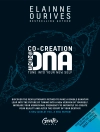This is an introductory textbook tailored for a one semester course on quantum mechanics at a technically oriented school. It covers fundamental quantum mechanics from an application’s perspective, considering optoelectronic devices, biological sensors and molecular imagers as well as solar cells and field effect transistors.
The book provides a brief review of classical and statistical mechanics and electromagnetism, and then turns to the quantum treatment of atoms, molecules, and chemical bonds.
Aiming at senior undergraduate and graduate students in nanotechnology related areas like physics, materials science, and engineering, the book could be used at schools that offer interdisciplinary but focused training for future workers in the semiconductor industry and for the increasing number of related nanotechnology firms, and even practicing people could use it when they need to learn related concepts.
The author is Professor Dae Mann Kim from the Korea Institute for Advanced Study who has been teaching Quantum Mechanics to engineering, material science and physics students for over 25 years in USA and Asia.
Table des matières
1 Review of Classical Theories
1.1 Harmonic Oscillator
1.2 Boltzmann Distribution Function
1.3 Maxwell’s Equations
2 Milestones Leading to Quantum Mechanics
2.1 Blackbody Radiation and Quantum of Energy
2.2 Photoelectric Effect and Photon
2.3 Compton Scattering
2.4 de Broglie Wavelength and Duality of Matter
2.5 Hydrogen Atom and Spectroscopy
3 Schrödinger Wave Equation
3.1 Operator Algebra and Basic Postulates
3.2 Eigenequation and Eigenvalues
3.3 Properties of Eingenfunctions
3.4 Commutation Relation
3.5 Uncertainty Relation
4 Bound States in Quantum Well and Wire
4.1 Electrons in Solids
4.2 1D, 2D and 3D Densities of States
4.3 Particle in Quantum Well
4.4 Quantum Well, Wire and Dot
5 Scattering and Tunneling of 1D Particle
5.1 Scattering at the Step Potential
5.2 Scattering from a Quantum Well
5.3 Tunneling
5.4 The Applications of Tunneling
6 Energy Bands in Solids
6.1 Bloch Wavefunction in Kronig-Penny Potential
6.2 E – k Dispersion and Energy Bands
6.3 The Motion of Electrons in Energy Bands
6.4 Energy Bands and Resonant Tunneling
7 The Quantum Treatment of Harmonic Oscillator
7.1 Energy Eigenfunction
7.2 The Properties of Eigenfunctions
7.3 HO in Linearly Superposed State
7.4 The Operator Treatment of HO
8 Schrödinger Treatment of Hydrogen Atom
8.1 Angular Momentum Operators
8.2 Spherical Harmonics and Spatial Quantization
8.3 The H-Atom and Electron-Proton Interaction
9 The Perturbation Theory
9.1 Time-Independent Perturbation Theory
9.2 Time-Dependent Perturbation Theory
9.3.1Harmonic Perturbation and Fermi’s Golden Rule
10 System of Identical Particles and Electron Spin
10.1 Electron Spin
10.3 Interaction of Electron Spin with Magnetic Field.
10.4 Electron Paramagnetic Resonance
11.1 Ionized Hydrogen Molecule
11.2 H2 Molecule
11.3 Ionic Bond and Van der Waals Attraction
11.4 Van der Waals Attraction
11.5 Polyatomic Molecules and Hybridized Orbitals
12 Molecular Spectra
12.1 Theoretical Background
12.2 Rotational and Vibrational Spectra of Diatomic Molecule
12.3 Nuclear Spin and Hyperfine Intreraction
12.4 Nuclear Magnetic Resonance (NMR)
13 Atom-Field Interaction
13.1 Atom-Field Interaction: Semi-Classical Treatment
13.2 Driven Two Level Atom
13.3 Atom-Field Interaction: Quantum Treatment
14 The Interaction of EM Waves with an Optical Media
14.1 Attenuation, Amplification and Dispersion of Waves
14.2 Atomic Susceptibility
14.3 Laser Device
15 Semiconductor Statistics
15.1 Quantum Statistics
15.2 Carrier Concentration in Intrinsic Semiconductor
15.3 Carrier Densities in Extrinsic Semiconductors
16 Carrier Transport in Semiconductors
16.1 Quantum Description of Transport Coefficients
16.2 Equilibrium and Non-Equilibrium
16.3 Generation and Recombination Currents
17 P-N Junction Diode: I-V Behavior and Device Physics
17.1 The p-n Junction in Equilibrium
17.2 The p-n Junction under Bias
17.3 Ideal Diode I-V Behavior
17.4 Non-Ideal I-V Behavior
18 P-N Junction Diode: Applications
18.1 Optical Absorption
18.2 Photodiode
18.3 Solar Cell
18.4 LED and LD
19 Field Effect Transistors
19.1 The Modeling of MOSFET I-V
19.2 Silicon Nanowire Field Effect Transistor
9.3 Tunneling NWFET as Low Power Device
20 The Application and Novel Kinds of FETs
20.1 Non-Volatile flash EEPROM Cell
20.2 Semiconductor Solar Cells
20.3 Biosensor
20.4 Spin Field Effect Transistor
20.5 Spin Qubits and Quantum Computing
A propos de l’auteur
Dae Mann Kim is Professor of Computational Sciences, Korea Institute for Advanced Study. A physicist by training (Ph D in physics, Yale University) but an engineer by profession, Kim started his teaching career at Rice University before moving to Oregon Graduate Institute of Science and Technology and later to POSTECH (S. Korea). He has over 25 years experience teaching quantum mechanics to senior students from engineering, materials science and physics departments. Collaborating extensively with industrial labs over the years, Kim offered short courses to working engineers at Samsung and LG.
Professor Kim has served as the chair of the curriculum committee of the Korean Nano Technology Research Society. Kim has over 100 publications on the quantum theory of lasers, quantum electronics and micro and nano electronics. He is a Fellow of the Korean Academy of Science and Technology and has also served as Associate Editor of IEEE Transactions on Circuits and Systems Video Technology.












